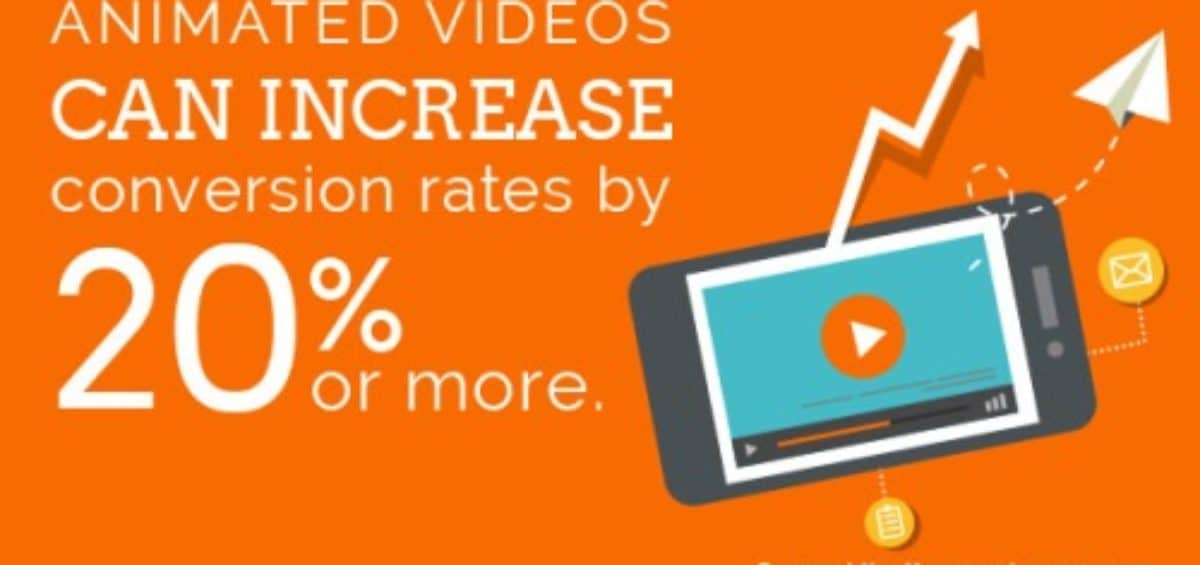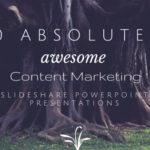We know that content is the most integral component to inbound strategy. We know that visual-based content is the key to inbound strategy success. The question becomes how do you as the inbound marketer most effectively incorporate this knowledge into your strategy.
Here are some tips we’ve learned along the way that have proven themselves successful for our clients. These tips are tied to as many areas of the inbound world as possible, with the majority of them relating to:
- SEO
- Marketing automation
- Content creation
- Social media
- Landing pages
- Email and lead nurturing
- Marketing analytics
SEO: Ranking on Google
Visual content will have a better shot at getting external links for link-building strategies. According to Neil Patel, visual content plays a big role in generating brand signals. He also states something Google pays attention to is having on-page images, which automatically boosts SEO. Google is a big fan of videos and studies have shown visuals keep people on a page longer, another thing that positively impacts search.
What to do?
1. Add images throughout your website.
2. Make sure you are titling and tagging them properly.
3. Utilize Alt-image text.
4. Keep image sizes small, as larger files can slow down load speed time, an easy way to negatively impact your rankings.
5. Create infographics and make them easily shareable with embed codes so that you retain proper linking attribution when someone else picks the infographic up.
6. Always have text surrounding the infographic on your page. That means naturally have introduction text leading up to the infographic, but more importantly, I’d recommend having the full text of the infographic, possibly even built out a bit more, below the infographic. Google will not be crawling a jpg file (what the infographic will be) and picking up any text outside of image tags.
7. Have videos on your site. Aim for explainer videos or other forms of animation when possible, as people respond more favorably to them than traditional live action video.
Content Creation
It is scientifically proven that humans respond to visual content exponentially more effectively than text-based, so visuals should be at the core of the content strategy for inbound.
Our brains process infographic 60,000 times fast with visual-based information than text.
What to do?
1. Become a machine of high-quality visual content.
2. Have a documented, structured content strategy that has a foundation in visual content, including:
- Infographics
- Visual ebooks
- Visual reports
- Visual presentations
- Animations
- Long-form articles that are heavy on visuals throughout
- Interactive infographics
CRO/Analytics for landing pages and websites in general
The landing pages that potential buyers come to should be equipped with visual lead magnets, video like explainer videos and whiteboard animations, and other forms of visual content.
Important stats to know:
- Pages with animated explainer videos convert customers 20% higher than pages without
- Usage of visuals, icons, infographics, etc lead to more CTAs being followed and longer time on page spent
- Visual guides or reports will have a higher conversion % of getting something into a buyer’s journey funnel
What to do?
Have any very important page, especially one that is a lead driver of conversions for you, contain an explainer video. Things to keep in mind about explainer videos:
- Absolute max length of 2 minutes. Aim for 75-90 seconds if possible, but the data shows 2 minutes is still okay, assuming you create an awesome animation.
- Get it professionally made. Maybe you can get away with winging it on a static piece of content. Animation is not the space where you want to try and improvise using some do it yourself software that appears “easy.” The problem is that you need a specialized animation scriptwriter to have the foundation be built properly, a team to storyboard everything out, a voiceover artist to professional record voiceover narration, music selection, sound effects, etc. Just find a company to build these. Trust me. You’ll save yourself massive amounts of time, headache, and in the end money from the major opportunity cost from your lost focus on other key areas.
 PR
PR
Visual content is your way in the back door of major online media outlets.
Imagine these two scenarios:
1. You reach out to an editor at a major site jumping up and down trying to get their attention and convince them to talk about your company instead of the other 500 people emailing them that week.
2. You create a compelling, thought-provoking infographic on a topic relevant to their readers, doesn’t talk about your company, but rather would provide actual value to the readers of the website the editor works at.
Which of the 2 scenarios do you think is more likely to get you coverage, links, and mentions from a major website? And now that you’re in the door, you can walk around, scope stuff out. Maybe there’s an opportunity to set up an interview for an executive from your company for the editor, either to be added content within their post or as a separate follow up piece. When this editor posts your infographic onto their site, you better be FIRST in line to share it, pass it around, get your mom’s next door neighbor’s dog walker’s 3rd cousin twice removed to do the same.
Anything you can to give this a boost, not because you want this piece to go “viral.” Because you want the editor to look good for having featured your infographic. Them looking good means they will be more receptive down the road to similar things. Make them love you.
Social
First, some stats:
- Images on Facebook generate 53% more likes than the average post
- Posts that include images produce 650% higher engagement than text-only posts
- Pinterest is one of the most powerful traffic driving sites in the world
- Engagement from Instagram users is as much as 10 times greater than other platforms
What to do?
- As often as possible, have every post contain an image of some sort. It could be a piece broken away from an infographic. A photo. A doodle you made on a napkin at a restaurant. Visuals are a must
- Make the content original. Whether you do it yourself, have someone in-house do it, or partner with an expert in the visual marketing space, try to make the content original and valuable for your ideal customer personas
- Make Pinterest a focus, as the brand signals that come from it is big, and help with search
Marketing Automation
Taking someone through a buyer’s journey using marketing automation is exponentially more effective when you are armed with strong visual content as your lead magnets.
A purely visual 10-page report is going to convert people are a MUCH higher clip than that same 10-page report that is mostly text and maybe some generic charts and stock photos.
What to do?
Following the structured content strategy plan we talk about a few points ago, have pieces of content ready to go for each stage of the buyer’s journey, being fed to prospects via marketing automation tools like Infusion Soft and Hubspot.
Email and Lead Nurturing
Within emails themselves, you can include links to animations, HTML based visual content, attachments to infographics or visual content, or simply a link driving someone to a page where you’ll have this visual content.
PPC: Ads on Google
Quality score of your page is tied to visuals.
Conclusion
It’s time to embrace visual marketing as the foundation of everything you’re doing in your role. Not because we’re saying so. It’s simply scientifically proven to help you do your job better, bring in more leads, make your sales team happy,bosses happy, and company grow revenue, and you look like a rock star. Not a bad deal, huh?
Leverage Visual Marketing To Dominate Your Content Marketing Goals



 PR
PR



